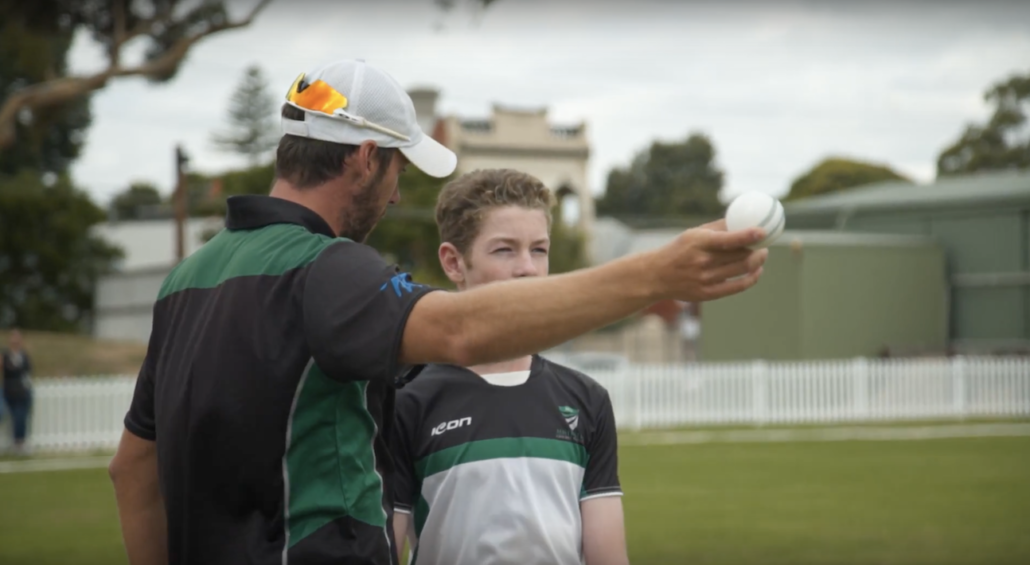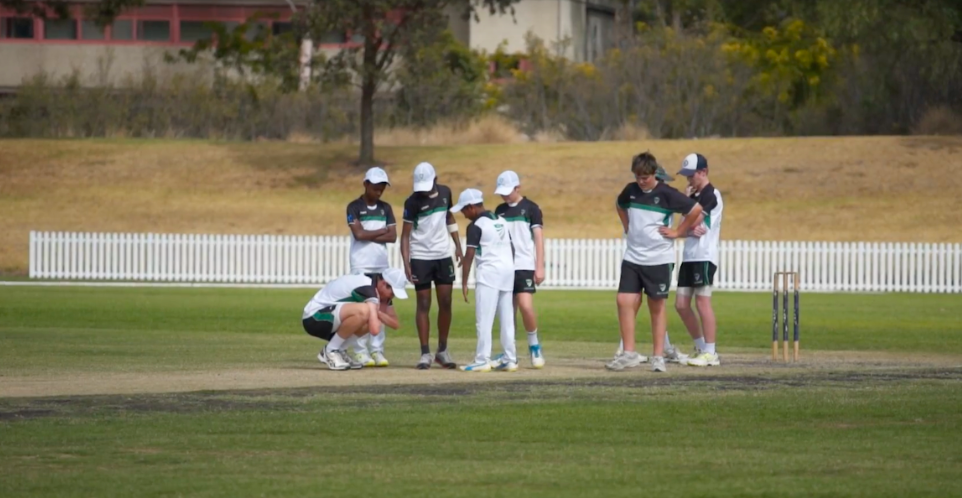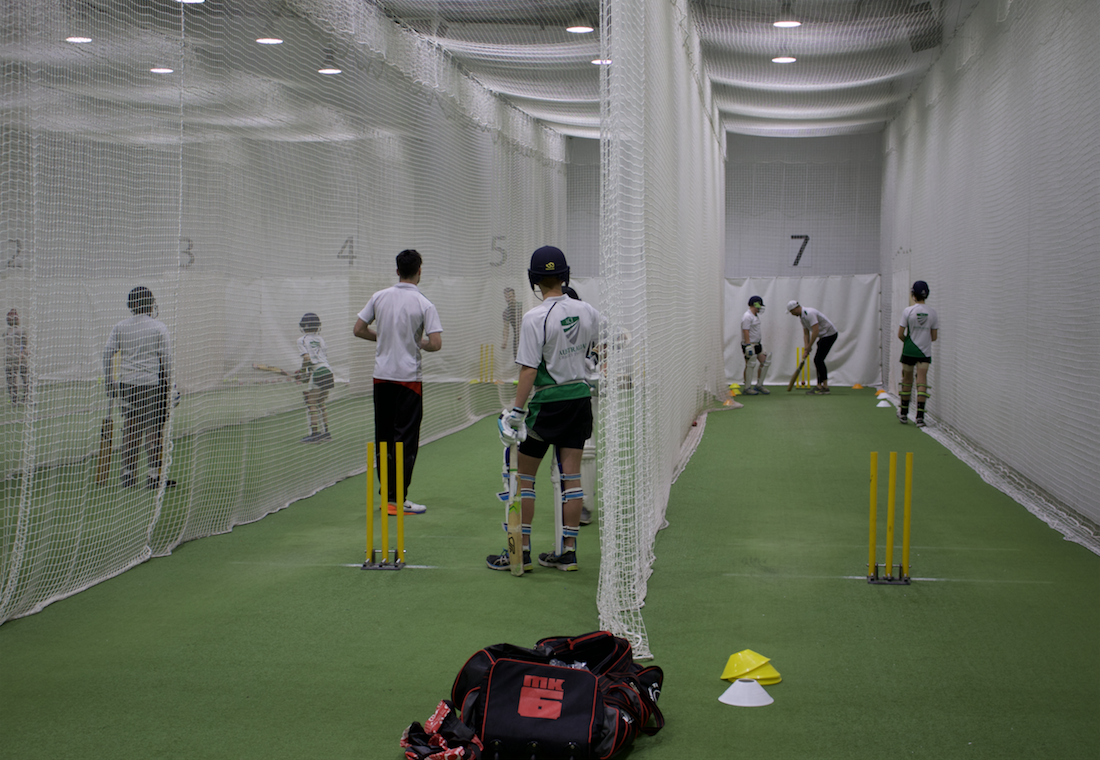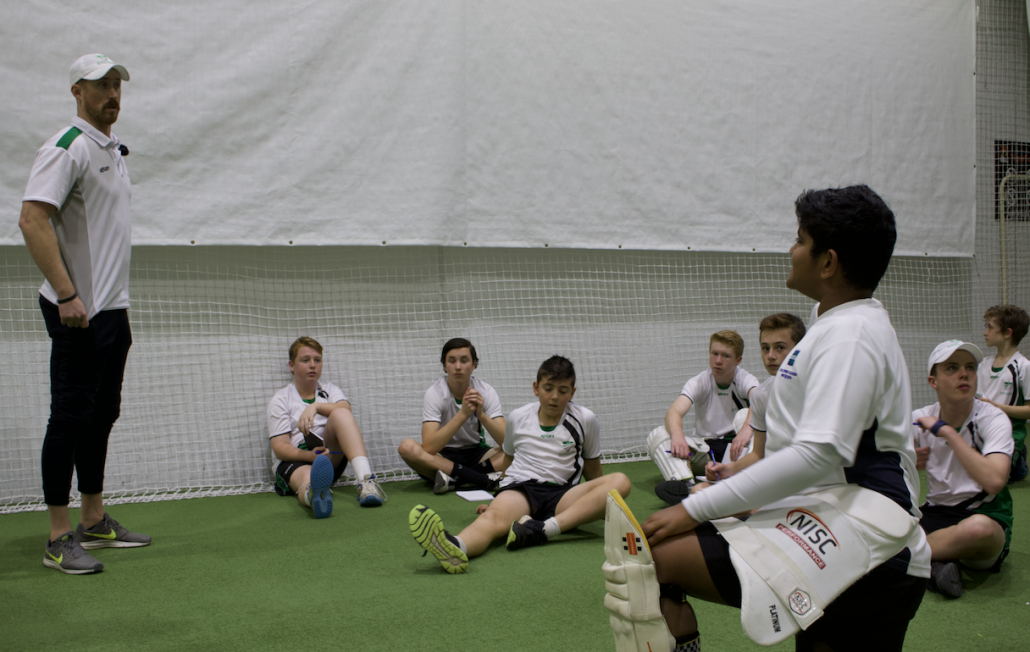The time used between balls by many players is not used very effectively by many players.
Cricketers come to the Australian Cricket Institute with a common problem. “ I get bogged down after a few balls and then play a silly shot and get out” or “ I have trouble bowling the ball where I want to consistently”.
For some, and to the naked eye, that’s a technical deficiency, which most likely is a contributing factor.
However the other side of it that hardly any people explore or consider is what is going on between their ears.
Cricket is a game of stop, start, hit a ball, stop and have some down time then only to be going back to getting ready to hit the ball again.
In this down time, most players use their time negatively or not at all. Your ability to be consistent and achieve the desired outcome over and over again is technical yes, but the time you spend in between balls is just as crucial.
Using this time well can help with staying in the moment. Thinking about what you need to do right now.
Too many players think about what has happened or what is going to happen. e.g. “ What if I play and miss again” or “I just bowled a wide, don’t bowl another!”.
If you can overcome your mind and use this time effectively the benefits are there to see.
Your concentration levels last longer, you make better decisions, you are not affected by the situation of the game as much and as a result you can make clearer decisions.
Below I’ve listed out 5 different things you can implement into your between ball routine that can help you from drifting away and putting pressure on yourself.
1. Positive Self Talk
A very simple one to start off with but sometimes quiet hard to master.
The important think with this is to realise that you are always going to have negative thoughts or reactions when you do something wrong or under pressure.
The important part is trying to wipe that as quickly as possible and turn those thoughts into a positive.
This can be practiced and done on any occurrence.
Instead of thinking “this bowlers too fast here, I don’t want to get hurt!” You could go down the path of “his pace is going to make it easier if I use that to my advantage, wait for the full overmatched ball but the rest I can use the pace and run it down to third man”.
2. Quick And Non Bias Self Review/Reflection
A lot of players spend so much time in between balls sweating about what shot they’ve played.
How many times have you seen a player hit it straight to a fielder and drop their head back in annoyance?
Or keep playing the same shot that they wanted to for the whole time between balls and then face back up?
I’m not saying you can’t practice the shot you wanted to play, but a lot of people spend too much time worrying and sweating on that ball and what they did wrong.
What you can do is really simply review and reflect on your shot and move on to something else as quickly as possible.
It could be as simple as a rating out of 10 and then what you’d do differently.
Short. Sharp. And finally, wiped clean so you don’t spend the next minutes or balls thinking about it.
3. Breathing
This is a relatively simple one.
It’s been proven that when you are under pressure or stress, your heart rate will go up.
The easiest way to lower that is by controlled breathing.
If you can actually focus on your breathing you’ll find that not only will it help you get your breath back and decrease your heart rate, but it will also then take your focus away from the game and other thoughts!
Try in for 5 or 6 and out for 7 or 8.
Allocating some time between balls to do this will help you get your levels back to even and you’ll be able to make better decisions.
4. Anchors to Distract You Away From The Pressure
Many elite players use certain actions or sequences of movements to help them switch off or take themselves away from an uncomfortable environment.
These pressures and distractions can look like the 'yappy' annoying slips cordon, concentrating on certain parts of the environment, scoreboard pressure and of course those negative thoughts we spoke about previously.
By having certain actions that take you outside of the situation, this helps you clear your mind and use that down time in a different way not thinking about those above pressure.
Some of these look like:
- Walking out to square leg
- Signing a song between balls
- Staring out of the field of play and switching off from the contest
- Watching people out on the boundary or those not involved in the game
- Undoing gloves
As mentioned these “anchors” or whatever you want to call them, help players take them self outside of the contest and the stresses.
I’m sure you may even do some of these already.
5. Visualisation
Finally another tool you can look to use is visualisation.
This is a very underestimated and yet quite an effective way to help players feel confident and problem solve during their time on the pitch.
The power of visualisation is quite influential.
Visualisation during your innings or while your bowling can help you settle yourself into your role or give you the confidence to replicate during your innings.
Using some of your time in between balls to see yourself playing that correct shot or bowling that ball in the right area.
When visualising, go deep into it. How does it feel, what does it look like, what does your body have to do in order to execute that shot or particular ball.
The more you can replicate how real it is and the exact movements the more realistic it is and will transfer into your mechanics of what you are doing.
It may be you visualising playing the ball confidently, or getting into a powerful and balanced position when playing your shots. Alternatively from the bowling perspective, it may be you coming and bowling a great length ball hitting the batsmen bat high on the splice as they are coming forward.
You can play out any scenario in your head before you’ve done it and it will fill you with the confidence to execute this in real time.
So there you have it, these are some techniques you can implement into the time you spend in between balls.
My advice is not to just copy and do all of them, find a sequence of events that is comfortable to you, but more importantly works.
The whole point of this is to use your time effectively in between balls and take your thoughts away from the negative things and elevate the pressure that players put on themselves.
How you do this is ultimately up to you, these are just some techniques you can implement.
Lastly, this between ball routine has to be repeatable. You cannot achieve consistent results if you continuously randomly do these actions.
It is a method to doing them and there has to be a distinct reason in your routine as to why.
These processes are for you only and as a result can be done however you like in your own way.
Don’t copy Steve Smith or David Warner just because he is a world class player as these will not necessarily work for you.
Author: Joel Hamilton - ACI Co-Founder & Coach













